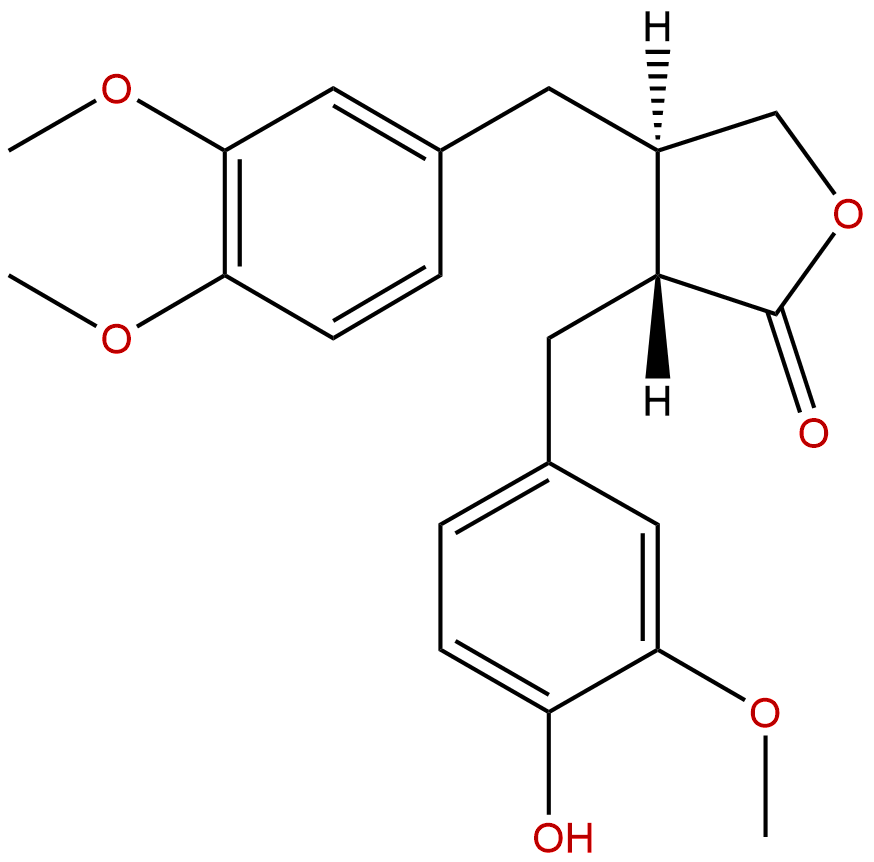
ArctigeninCAS No.:7770-78-7
|
||||||||||
 |
|
|
||||||||

| Catalogue No.: | BP0186 |
| Formula: | C21H24O6 |
| Mol Weight: | 372.417 |
Product name: Arctigenin
Synonym name: (-)-Arctigenin
Catalogue No.: BP0186
Cas No.: 7770-78-7
Formula: C21H24O6
Mol Weight: 372.417
Botanical Source: Arctium lappa L.(Burdock)
Physical Description: Powder
Type of Compound: Lignans
Purity: 95%~99%
Analysis Method: HPLC-DAD or/and HPLC-ELSD
Identification Method: Mass, NMR
Packing: Brown vial or HDPE plastic bottle
Storage: Store in a well closed container, protected from air and light. Put into refrigerate or freeze for long term storage.
Whenever possible, you should prepare and use solutions on the same day. However, if you need to make up stock solutions in advance, we recommend that you store the solution as aliquots in tightly sealed vials at -20℃. Generally, these will be useable for up to two weeks.
The product could be supplied from milligrams to grams, up to kilograms
Inquire for bulk scale.
Descriptions:
Arctigenin, naturally occurring in Bardanae fructus, Saussurea medusa, Arctium lappa L., Torreya nucifera and Ipomea cairica, is a phenylpropanoid dibenzylbutyrolactone lignan with antioxidant and anti-inflammatory activities, it can potently inhibit the activity of MKK1 in vitro with the IC(50) value of 1 nM, and inhibit activation of MAP kinases including ERK1/2, p38 kinase and JNK through the inhibition of MKK activities, leading to AP-1 inactivation, which might, at least in part, contribute to the inhibition of TNF-α production, inhibits expression via suppressing JAK-pathway in macrophages.[1,2]
Arctigenin blocks the activation of Akt induced by glucose starvation, which is a key process in the tolerance exhibits by cancer cells to glucose starvation, suggests arctigenin could be an antitumor agent having the ability to eliminate the tolerance of cancer cells to nutrient starvation.[3]
Arctigenin has a glucose-lowering effect, is a potent indirect activator of AMPK via inhibition of respiratory complex I, with beneficial effects on metabolic disorders in ob/ ob mice, suggests the potential value of arctigenin as a possible treatment of type 2 diabetes.[4]
References:
[1] Min K C, Jang Y P, Kim Y C, et al. Int Immunopharmacol, 2004, 4(10-11):1419-29.
[2] Kou X, Qi S, Dai W, et al. Int Immunopharmacol, 2011, 11(8):1095-102.
[3] Awale S, Lu J, Kalauni S K, et al. Cancer Res, 2006, 66(3):1751-7.
[4] Huang S L, Yu R T, Gong J, et al. Diabetologia, 2012, 55(5):1469-81.
[5] Rui-Tao Y U, Luo Z M, Zhang X W, et al. Chinese Journal of Pharmaceutical Analysis, 2010(02):294-6.
HPLC of Arctigenin
